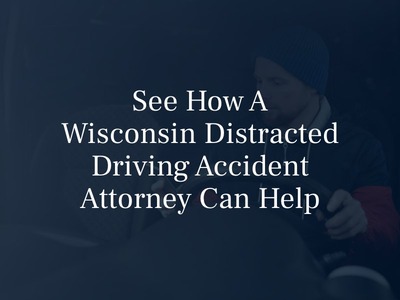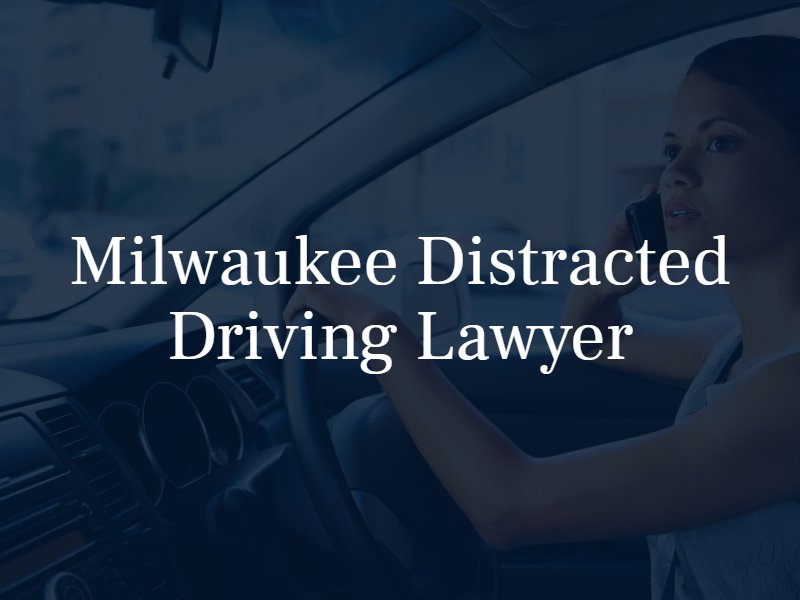If you drive frequently, you have probably witnessed it or may have even been a culprit yourself: doing something other than keeping your attention on the road and the task at hand. Distracted driving is one of the greatest dangers on America’s roadways. It is to blame for thousands of injuries and hundreds of thousands of deaths – which would have been entirely preventable if drivers had been paying attention.
A Milwaukee personal injury attorney can help you if you’ve been the victim of a negligent distracted driver.
According to statistics on the Department of Transportation’s website, www.distraction.gov, 3,308 people were killed and about 289,310 were injured in distraction-affected collisions in the United States in 2022. These accidents could have been prevented if drivers had kept their eyes on the road, their hands on the wheel and their mental attention on driving.
At Cannon & Dunphy S.C., our Wisconsin distracted driving accident attorneys provide experienced legal counsel for clients across Wisconsin who have been injured by distracted drivers. Car accident claims and lawsuits are a key part of our legal practice, as we recognize the significant impact these preventable incidents can have on all aspects of a victim’s life.
We understand how losing a loved one in this way can cause unprecedented devastation for an entire family. If you would like to talk to a Milwaukee car accident lawyer about your options and rights in the aftermath of a collision, please do not hesitate to call for a confidential and free case review.
Steps to Take After a Distracted Driving Accident in Wisconsin
Being involved in an accident with a distracted driver can leave you feeling overwhelmed and uncertain about what comes next. You are dealing with potential injuries, vehicle damage, and the stress of an unexpected crisis.
Taking the right steps immediately after the accident can protect your health and strengthen any future legal claim you might need to pursue:
- Prioritize Your Safety and Report the Accident: Move to a safe location if possible and call 911 immediately. The police report often documents important details and may include officer observations about distracted driving behavior.
- Go to the Hospital: Even if you feel fine at the scene, many injuries don’t manifest symptoms until hours or days later. Getting a medical evaluation creates documentation that links your injuries to the accident.
- Document Everything: If you can, take photos of the vehicle damage, accident scene, road conditions, and any visible injuries while the scene is fresh.
- Gather Witness Information: Collect the names and contact details of anyone who saw the accident occur. Their testimony could be valuable later.
- Avoid Admitting Fault: Stick to factual statements when speaking with the other driver, police, and insurance companies without speculating about cause.
- Contact a Wisconsin Distracted Driving Accident Attorney: An experienced attorney can help preserve evidence and protect your rights from the start. Schedule a consultation to discuss your next steps.
What is distracted driving?
Distracted driving may be described as operating a motor vehicle while engaging in any type of activity that takes one’s attention from driving. Any type of distraction can significantly impair a driver’s ability to safely operate a vehicle, with a considerably increased risk of causing or being involved in a collision.
These distractions may fall under one or more of three primary categories: those that affect visual attention, those that affect mental attention and those that affect manual attention.
- Visual attention refers to a driver’s eyes on the road. Turning to look at a passenger, reading a map or in-vehicle navigation system, looking down at a phone or looking in a mirror to apply make-up are all examples of distractions that would affect visual attention. A mere moment or matter of seconds is all it takes for a driver to miss an obstacle in the road, drift from a lane or fail to notice a change in traffic, causing a crash.
- Mental attention, or cognitive attention, refers to a driver’s mind being focused on driving. Many different activities may affect a driver’s mental attention, such as texting, talking to a passenger, driving with too little sleep or driving under the influence of alcohol or drugs. Judgment and reaction time will be affected if mental attention is decreased.
- Manual attention refers to a driver’s hands on the wheel. If a person takes one or both hands from the wheel while driving, he or she will be unable to respond quickly in the event of a road hazard or other emergency. A driver may lose control of the vehicle with insufficient time to react or may drift from the road or lane. Texting, using a hand-held cellphone, eating, lighting a cigarette and personal grooming are examples of distractions that affect manual attention.
Perhaps the most dangerous distractions are those that affect all three forms of attention: visual, mental and manual. Texting while driving is widely recognized as the most dangerous distraction affecting today’s drivers. A recent study by the Virginia Tech Transportation Institute found that a driver’s chances of a collision increase by up to 23 times when texting while driving, as opposed to a driver who is not driving while distracted.
Our Milwaukee accident lawyers have also seen distracted driving to be a leading cause of motorcycle accident injury claims.
What Are My Legal Options After an Accident with a Distracted Driver?
Wisconsin operates under a fault-based insurance system, which means the driver who caused your accident is responsible for covering your damages. This gives you several avenues for recovering compensation after being injured by a distracted driver:
- You can file a claim against the at-fault party’s liability insurance company.
- You can file a claim with your own insurance, as long as you have the appropriate coverage.
- You can file a personal injury lawsuit against the distracted driver in civil court.
The damages available in Wisconsin distracted driving cases can be substantial, covering both economic and non-economic losses. Economic damages include medical expenses, lost wages, and property damage. Non-economic damages compensate for physical pain, emotional distress, and loss of enjoyment of life.
How to Prove Distracted Driving in a Car Accident
To win your claim, you will need to show that the at-fault driver failed to exercise reasonable care while operating their vehicle. Your attorney will establish negligence by proving four key legal elements, each building upon the previous one to create a compelling case for compensation:
- Duty Of Care: Every driver has a legal obligation to operate their vehicle safely and pay attention to the road, other drivers, and traffic conditions.
- Breach Of Duty: The distracted driver violated this duty by engaging in activities that took their attention away from driving, such as texting, talking on the phone, or other distracting behaviors.
- Causation: You must prove the driver’s distracted behavior directly caused the accident that resulted in your injuries and damages.
- Damages: You suffered losses, including physical injuries, property damage, financial losses, or other measurable impacts from the accident.
Several pieces of evidence can help prove these elements, such as cell phone records showing calls or texts at the time of the crash, traffic camera footage, witness statements describing the driver’s behavior, police reports documenting distracted driving, and testimony from accident reconstruction experts.
At Cannon & Dunphy S.C., we will thoroughly investigate every aspect of your case and work with qualified experts to analyze the evidence, presenting the strongest possible case for your compensation.
Contact a Distracted Driving Accident Lawyer in Wisconsin

Learn more about distracted driving accidents and your rights. Contact us online or call (262) 782-2700 to speak to a Wisconsin distracted driving accident lawyer at our law firm for your free consultation.
